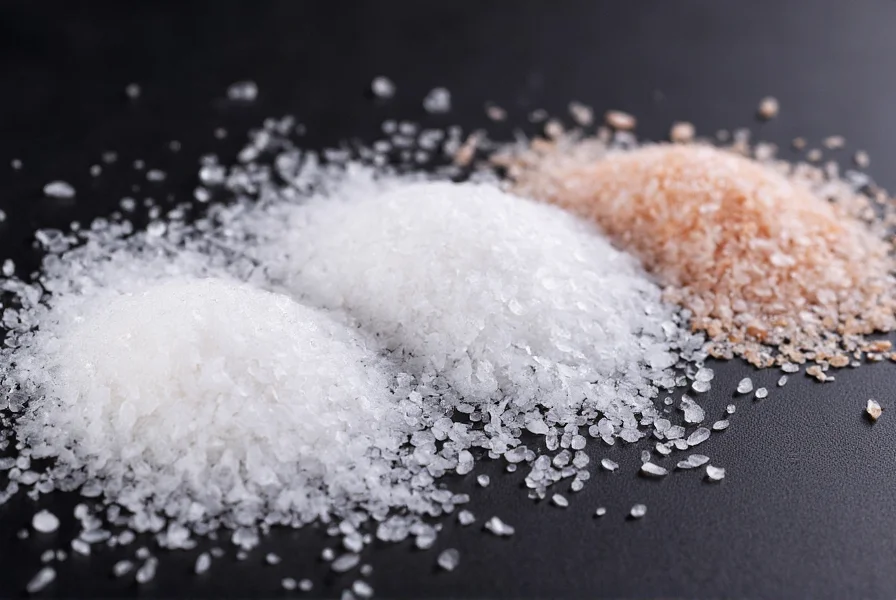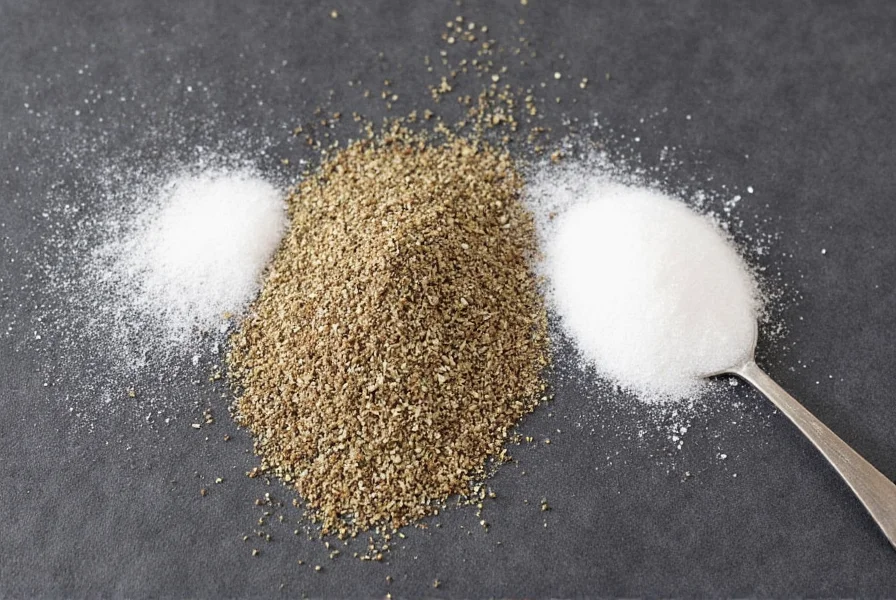Understanding how to properly use salt and pepper transforms ordinary cooking into exceptional culinary experiences. These two seasonings work synergistically—salt amplifies existing flavors while pepper adds its own distinctive heat and complexity. The science behind their effectiveness explains why they've remained kitchen staples for centuries across virtually all culinary traditions worldwide.
The Essential Role of Salt in Cooking
Salt isn't merely a flavoring agent; it fundamentally alters how we perceive food. Sodium chloride works by suppressing bitterness while enhancing sweetness, sourness, and umami. When added early in cooking, salt penetrates ingredients, seasoning them throughout. When applied at the end, it provides a bright, immediate flavor burst. Different salt varieties serve specific purposes:
| Salt Type | Best Culinary Uses | Unique Characteristics |
|---|---|---|
| Kosher Salt | General cooking, seasoning meats | Larger crystals, easy to pinch, no additives |
| Sea Salt | Finishing dishes, delicate applications | Mineral variations create subtle flavor differences |
| Table Salt | Baking, precise measurements | Smaller crystals, often contains anti-caking agents |
| Fleur de Sel | Finishing gourmet dishes | Hand-harvested, delicate flavor, expensive |
Pepper: More Than Just Heat
Black pepper's complexity comes from piperine, the compound responsible for its heat, along with dozens of aromatic volatile oils. Freshly ground pepper releases these compounds, creating a more nuanced flavor profile than pre-ground versions. The grinding process matters significantly—coarse grinds work best for steak crusts, while fine grinds distribute evenly in sauces.

White pepper, made from fermented peppercorns with the outer layer removed, offers a different flavor profile often preferred in light-colored dishes where black specks would be undesirable. Green peppercorns, harvested unripe, provide a fresher, fruitier note ideal for certain sauces and seafood preparations.
Mastering Salt and Pepper Timing
The timing of salt and pepper application dramatically affects final flavor. For meats, salting 45-60 minutes before cooking allows surface moisture to evaporate, creating better browning. When cooking vegetables, add salt to boiling water to enhance flavor penetration. With soups and stews, season in layers—adding salt at multiple stages rather than all at once.
Professional chefs follow the "season as you go" principle, tasting and adjusting throughout the cooking process. This approach prevents the common mistake of underseasoning early and overcompensating at the end. Remember that salt requirements increase with dish complexity—a simple salad needs less seasoning than a rich stew.
Common Salt and Pepper Mistakes to Avoid
Many home cooks make critical errors with these fundamental seasonings. The most frequent issue involves using insufficient salt, often because they're seasoning to taste at the end rather than throughout cooking. Another common mistake is using pre-ground pepper exclusively, missing the aromatic complexity of freshly ground varieties.
Understanding salt concentration is crucial—what tastes perfectly seasoned in a small sample may be underseasoned when scaled up. Always err on the side of slightly underseasoning initially, as you can always add more but cannot remove excess. When correcting oversalted dishes, add acid (like lemon juice) or bulk ingredients rather than trying to "dilute" with water, which often compromises texture.
Advanced Salt and Pepper Applications
For culinary enthusiasts ready to elevate their seasoning skills, consider these advanced techniques. Create compound butters with different salt varieties and freshly cracked pepper for instant flavor boosts. Experiment with smoked salts for barbecue applications or citrus-infused peppercorns for seafood dishes.
Understanding regional salt and pepper traditions reveals cultural insights—French cuisine favors fleur de sel for finishing, while Indian cooking often uses black lava salt in specific dishes. Japanese cuisine employs specialty salts like yuzu salt for particular applications. These traditions developed because they genuinely enhance the specific dishes they accompany.
Storage and Quality Preservation
Proper storage maintains the quality of both seasonings. Keep salt in an airtight container away from humidity, which causes clumping. For pepper, whole peppercorns retain their volatile oils much longer than pre-ground versions—store them in a dark glass container to preserve freshness. Replace your pepper mill's contents every 3-4 months for optimal flavor.
When selecting salt, look for clean labels without unnecessary additives. For pepper, choose whole peppercorns from reputable sources with visible harvest dates. Specialty salts and freshly harvested peppercorns make noticeable differences in discerning palates, justifying their higher cost for serious cooks.
FAQ Section
What's the ideal salt and pepper ratio for seasoning steak?
The ideal ratio depends on steak thickness and cut, but professional chefs typically recommend 3/4 teaspoon kosher salt and 1/2 teaspoon freshly ground black pepper per pound of meat. Thicker cuts benefit from salting 45-60 minutes before cooking to allow penetration, while thinner cuts need only 15-20 minutes. Always season both sides evenly and let the steak come to room temperature before cooking.
Why does freshly ground pepper taste better than pre-ground?
Freshly ground pepper releases volatile aromatic compounds that dissipate quickly after grinding. These compounds create the complex flavor profile beyond simple heat. Pre-ground pepper loses up to 80% of these volatile oils within hours of grinding, resulting in a one-dimensional heat without the nuanced floral, citrus, and pine notes present in freshly ground pepper. For maximum flavor impact, grind pepper immediately before use.
When should I use sea salt versus kosher salt in cooking?
Use kosher salt for general cooking and seasoning meats because its larger crystals dissolve evenly and it's easy to pinch. Sea salt works best as a finishing salt due to its delicate flavor variations and attractive crystal structure. For precise measurements in baking, use table salt as its smaller crystals provide consistent volume measurements. Never substitute salt types by volume in recipes—always adjust by weight or taste.
How can I fix an oversalted dish without ruining the texture?
Adding acid like lemon juice or vinegar counteracts saltiness by balancing flavors without diluting the dish. Incorporating unsalted ingredients that complement the dish (like additional vegetables or potatoes) absorbs excess salt while enhancing the meal. For soups and sauces, a raw potato can temporarily absorb some salt, but remove it before serving. Never add water to oversalted dishes as this dilutes flavor complexity and alters texture.
Does the type of pepper mill affect flavor quality?
Yes, the mill type significantly impacts flavor. Ceramic or carbon steel grinding mechanisms preserve peppercorns' volatile oils better than plastic grinders. Adjustable grinds allow control over particle size, which affects flavor release—coarse grinds work best for steak crusts while fine grinds distribute evenly in sauces. Avoid mills that generate excessive heat during grinding, as this degrades flavor compounds. Regular cleaning prevents old pepper residue from affecting fresh grind quality.











 浙公网安备
33010002000092号
浙公网安备
33010002000092号 浙B2-20120091-4
浙B2-20120091-4